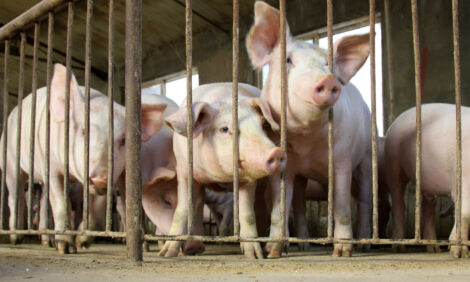



NADIS Veterinary Report & Forecast - December 2009
UK - This is a monthly report from the National Animal Disease Information Service (NADIS), looking at the data collected from their UK farm inspections.Respiratory disease, presenting as coughing, laboured breathing and slowed growth is one of the most important and prevalent syndromes seen and reported by NADIS surveillance Veterinary Surgeons. Whilst the causes are often complex, the trends in disease levels may reflect both environmental conditions and active control measures for specific components. Over the last 18 months, PCV2 vaccines have become widely used in pig farms and it is likely to be no co-incidence that the decline in recorded prevalence in 2009 has occurred. However, over the last two years disease levels, especially in growers has risen dramatically in the autumn and winter. We are now entering that period, but if the same picture is repeated it is at least starting from a lower base (graph 1).

Furthermore, in 2007, a jump of disease was also seen in the summer, especially in straw yard systems. This pattern, however, has not now been seen in the last two years, possibly reflecting less extreme heat.
The abattoir derived SEP scores (graph 2) arising from BPHS, in NADIS recorded farms, has broadly reflected the clinical picture with a year on year decline and an autumnal rise in 2008 (though not in 2007).

Regional variation over the last year is very marked, with disease levels in the two major pig-keeping regions quite different (graph 3). East Anglia – with its preponderance of straw-based systems has reported more than double the level of disease seen in North East England – where slatted systems with controlled ventilation predominate.
The less pig-dense areas see even lower levels of disease.

The picture, in terms of management systems, tends to reflect the regional picture (Graph 4.) Disease in straw based systems is nearly double that of slatted systems – suggesting perhaps that active ventilation management is beneficial as part of disease control. Perhaps, a little surprisingly, outdoor derived pigs show more disease than indoor produced piglets, but this may coincide with both the regional bias and the tendency for outdoor derived pigs to be kept on straw.

As might be expected, continually occupied systems have higher levels of disease than batch systems, although the difference is small (1 per cent v 1.2 per cent prevalence). It is, therefore, somewhat surprising to see much higher levels of respiratory disease in nursery/finisher sites, which tend to lend themselves to batch production. (Graph 5.)

Graph 6 reveals no particular pattern with respect to herd size of the feeding herd.

The pig industry now has at its disposal a range of vaccines used to control growing pig respiratory disease. (Enzootic pneumonia, PRRS, PCV2, Glässers Disease etc.) Over time, the “population effect” of these vaccines would be expected to continue to improve the disease picture – all that is needed is the availability of effective, safe and economical combination vaccines.
Further Reading
| - | You can view the full report by clicking here. |







